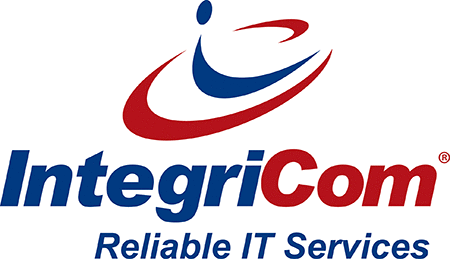In collaborative work environments, shared mailboxes offer a seamless way for teams to handle communications in a centralized, accessible manner. Microsoft 365 shared mailboxes are designed to simplify group email management, allowing multiple users to access and send emails from a single address without needing individual licenses.
This article provides a deep dive into how shared mailboxes work, their benefits and limitations, and best practices for setting them up across different team scenarios. By the end, you’ll have a solid understanding of how shared mailboxes can optimize communication workflows for departments like customer service, IT support, sales, project management, and more.
Understanding Shared Mailboxes in Microsoft 365
A shared mailbox is a type of email account that allows multiple people to send and receive emails from a single address (e.g., support@company.com). Rather than associating the mailbox with an individual user, Microsoft 365 lets organizations create mailboxes accessible to all users with granted permissions. This setup eliminates the need for each user to purchase a separate license, making it an efficient and cost-effective communication solution.
Key Features of Shared Mailboxes:
- Centralized Communication: Team members access all emails in one place, reducing confusion and overlap.
- Uniform Identity: By using a single email address, organizations present a consistent image to customers or clients.
- Cost Savings: Shared mailboxes are free (up to a 50GB limit), offering budget-friendly collaboration.
- Easy Accessibility: Accessible on the Outlook desktop app, Outlook on the web, and mobile Outlook apps, allowing team members to check shared mailboxes on the go.
Benefits and Limitations
Benefits:
- Increased Collaboration: Shared mailboxes make it easy for multiple users to view, reply to, and organize emails collectively.
- Enhanced Oversight: Managers or team leads can monitor communications and ensure quality control.
- Efficient Customer Response: Streamlined responses from a single email address help avoid duplicate or conflicting replies.
Limitations:
- No Individual Logins: Shared mailboxes don’t have individual credentials, making it hard to track who sent each email.
- Limited Calendaring Options: While shared mailboxes include a calendar, they lack certain individual scheduling functionalities.
- Storage Caps: Shared mailboxes are limited to 50GB unless an additional license is assigned.
Setting Up Shared Mailboxes in Microsoft 365
Setting up a shared mailbox in Microsoft 365 is straightforward. Here’s how you can create and configure one to suit your team’s needs:
- Access the Microsoft 365 Admin Center: Log in with an admin account.
- Navigate to Shared Mailboxes: Under Groups, select Shared mailboxes.
- Add a New Shared Mailbox:
- Click Add a shared mailbox.
- Specify the mailbox’s name (e.g., “Customer Support”) and email (e.g., support@yourdomain.com).
- Select Create.
- Assign Permissions:
- After creating the mailbox, go to Manage mailbox permissions.
- Assign users Full Access (to open and view emails) and Send As or Send on Behalf permissions.
- Add Shared Mailbox to Outlook:
- In the Outlook desktop or web app, users with permissions will see the mailbox appear in their navigation pane.
Managing Permissions: Access Levels and Controls
Shared mailboxes require setting permissions carefully to ensure security and functionality. Microsoft 365 offers three primary permission levels:
- Full Access: Allows users to open and read all emails, but not send them as the shared mailbox.
- Send As: Enables users to send emails as if from the shared mailbox, making the sender appear as the mailbox (ideal for customer interactions).
- Send on Behalf: Allows users to send emails on behalf of the shared mailbox. Recipients will see “Sent on behalf of [Shared Mailbox].”
These permissions can be managed in the Microsoft 365 Admin Center or through PowerShell for batch assignments, helping IT administrators efficiently manage access.
Practical Applications for Shared Mailboxes
Different teams can leverage shared mailboxes for unique needs. Below are several common use cases:
Customer Service
Customer service teams benefit significantly from shared mailboxes. A support@domain.com or info@domain.com mailbox allows:
- Quick Responses: Multiple agents can view and reply to emails, reducing wait times.
- Seamless Collaboration: Customer inquiries are visible to the team, enabling quick hand-offs and visibility into ongoing issues.
- Quality Control: Managers can supervise emails and replies, maintaining consistency and quality.
Sales and Marketing
Sales and marketing departments often use shared mailboxes to manage inquiries, campaigns, and newsletters. A sales@domain.com mailbox enables:
- Centralized Lead Tracking: All sales inquiries are visible, preventing missed opportunities.
- Consistent Messaging: Using templates or standardized replies ensures uniform communication with prospects.
- Team Accessibility: Sales team members can stay updated on new leads and ongoing communication.
IT Support and Helpdesk
Shared mailboxes are ideal for IT and helpdesk teams. A helpdesk@domain.com mailbox allows:
- Centralized Support Requests: Users send requests to one email, accessible by all IT staff, streamlining ticket management.
- Workload Management: IT team members can monitor and assign support requests based on urgency and availability.
- Historical Tracking: Issues are visible to the team, allowing them to identify recurring problems and apply long-term fixes.
Project Management
For project teams, a shared mailbox (e.g., projectA@domain.com) facilitates:
- Centralized Communication: All project-related emails are stored in one place, accessible to the entire team.
- Transparent Progress Tracking: Project status, updates, and client feedback are visible to everyone involved, reducing the chance of missed communications.
- Efficient Collaboration: Project communications are accessible to everyone on the team, simplifying task hand-offs and project management.
General Information and Announcements
For general inquiries and announcements (e.g., info@domain.com), shared mailboxes provide:
- Single Point of Contact: All general queries are directed to one place, allowing responses from any team member.
- Internal Announcements: An email address that employees know they can access for announcements or company news.
Best Practices for Optimizing Shared Mailboxes
To make the most of shared mailboxes, consider the following best practices:
- Assign Access Thoughtfully: Only necessary users should have access to maintain security and avoid email clutter.
- Use Response Templates: Templates for common inquiries save time and maintain consistency.
- Monitor and Archive Regularly: Ensure the mailbox remains under the storage limit by archiving old emails regularly.
- Leverage Rules and Automation: Set up rules to automatically sort and categorize emails for better organization.
- Implement Security Protocols: Enable MFA for team members and use validation methods to secure sensitive information sent through shared mailboxes.
Troubleshooting Common Shared Mailbox Issues
Even with careful setup, shared mailboxes can present occasional challenges. Here’s how to tackle some of the most common issues:
1. Shared Mailbox Not Appearing in Outlook
- Verify that users have Full Access permissions.
- Users may need to restart Outlook for the mailbox to display.
2. Issues with Send As or Send on Behalf
- Confirm the correct permissions are assigned.
- If conflicts arise, reassign permissions through the Microsoft 365 Admin Center.
3. Storage Limit Reached
- Archive old messages or assign a license to increase the mailbox’s storage capacity.
4. Missing Notifications
- Set up notification alerts in Outlook, or enable desktop notifications to ensure that new emails are seen promptly.
Frequently Asked Questions (FAQs)
Do shared mailboxes require a Microsoft 365 license? No, shared mailboxes are free up to a 50GB storage limit. Assigning a license is only necessary if more storage is required.
Can shared mailboxes be accessed on mobile devices? Yes, the Outlook mobile app allows access to shared mailboxes for users with the necessary permissions.
How are permissions assigned or modified for a shared mailbox? Permissions can be set in the Microsoft 365 admin center or via PowerShell for batch updates.
What if an employee with access to the shared mailbox leaves the organization? Their access is removed automatically when their user account is deactivated, ensuring security. Regularly audit permissions to keep access up to date.
Conclusion
Microsoft 365 shared mailboxes are powerful tools for team communication, making it easy for multiple users to access and manage emails from a single, centralized address. By understanding the benefits, limitations, and best practices of shared mailboxes, organizations can improve team collaboration, enhance customer responsiveness, and maintain control over group communications.
Whether you’re setting up a support mailbox for customer inquiries, a project mailbox for collaborative tasks, or a general information mailbox for announcements, shared mailboxes help keep your organization’s communication organized and efficient. Properly configured and managed, shared mailboxes can be a valuable asset in Microsoft 365.


